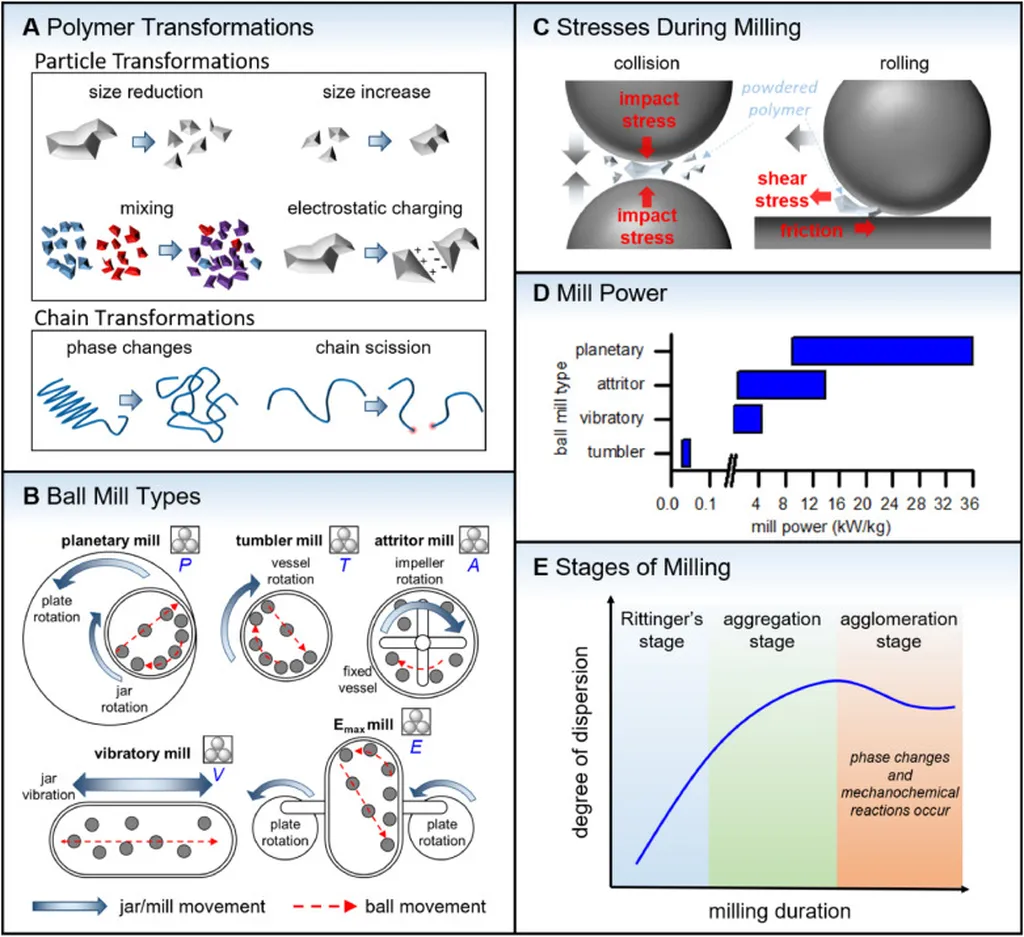In the quest for sustainable and cost-effective solutions to environmental remediation, a novel method is gaining traction, promising to revolutionize the way we address soil and water pollution. Researchers, led by Hangyu Li from the State Key Laboratory on Soil and Sustainable Agriculture at the Institute of Soil Science, Chinese Academy of Sciences, have been exploring the potential of ball milling technology to synthesize biochar-iron based materials. Their findings, published in the journal *npj Materials Sustainability* (translated as “Sustainable Materials Science and Technology”), offer a glimpse into a future where environmental cleanup is more efficient and eco-friendly.
Ball milling, a process that involves grinding materials into fine powders using a ball mill, has emerged as a promising technique for creating biochar-iron based materials. These materials have shown remarkable potential in adsorbing, reducing, and catalyzing the degradation of various pollutants in soil and water. The appeal of this method lies in its simplicity, cost-effectiveness, and scalability, making it an attractive option for large-scale environmental remediation projects.
Li and his team delved into the intricate details of ball milling technology, examining how different parameters such as pre-treatment, pyrolysis temperature, milling speed, time, ball-to-material ratio, and milling atmosphere influence the properties of the resulting materials. “Understanding these parameters is crucial for optimizing the performance of biochar-iron based materials,” Li explained. “By fine-tuning these factors, we can enhance the materials’ ability to remove pollutants and improve their overall effectiveness.”
The research highlighted the significant impact of ball milling pre-treatment and pyrolysis temperatures on the performance of these materials. For instance, varying the pyrolysis temperature can alter the porosity and surface area of the biochar, which in turn affects its adsorption capacity. Similarly, the milling speed and time can influence the particle size and distribution, impacting the material’s reactivity and stability.
One of the key findings of the study was the distinct roles that biochar and iron-based materials play in the remediation process. Biochar, derived from the pyrolysis of organic materials, provides a large surface area and porous structure that enhances adsorption. On the other hand, iron-based materials facilitate chemical reduction and catalytic oxidation, breaking down pollutants into less harmful substances.
The commercial implications of this research are substantial, particularly for the energy sector. As the push for sustainable energy solutions intensifies, the need for effective environmental remediation technologies becomes increasingly critical. Biochar-iron based materials synthesized through ball milling could offer a viable solution for cleaning up contaminated sites, ensuring the safety and sustainability of energy production processes.
However, the researchers acknowledge that there is still much to learn about the underlying mechanisms of ball milling. “While we have made significant progress, there is still a need for further investigation to fully understand how ball milling affects the properties and performance of these materials,” Li noted. “This knowledge will be crucial for developing more efficient and effective remediation strategies.”
As the world grapples with the challenges of environmental pollution, the research conducted by Li and his team offers a ray of hope. By harnessing the power of ball milling technology, we can create innovative solutions that not only address the pressing issues of our time but also pave the way for a more sustainable future. The journey towards environmental restoration is long and complex, but with continued research and development, the promise of a cleaner, healthier planet is within reach.

